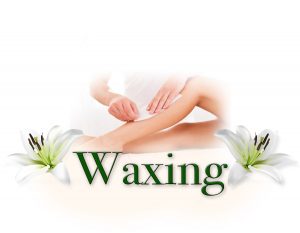Waxing

Hygiene Procedures
The results of learning this module will be that you will be able to identify the correct procedure to follow in order to ensure hygienic methods of operation. You will also know which products can be used to achieve this result.
Hygiene
No matter which form of treatment you are providing for your client you must ensure that you use hygienic methods to prepare for the service and while doing the work. You must make sure that your tools, towels, beauty beds and table are sanitised and sterilised, and that your hands are as well.
Most items can be sterilised, or if not they may be disposed of. Spatulas and other beauty tools should be washed in warm soapy water and then immersed in Hospital Grade disinfectant and left to soak, so it is best that you have two or three spatulas as part of your kit for waxing. Wooden disposable spatulas can simply be thrown out after working with each waxing client.
Also, whether you are setting up your business from home or running it from a shop you should make sure that the area that the client sees and attends for their treatment is immaculately clean. If you eventually build your business so that you are working many hours a day it would pay to have someone come in to do the cleaning for you so that your workplace gives the right impression to your client when they arrive. It is unrealistic to expect you to also have to do the cleaning once you have a booming business up and running!
Make sure that your dress and appearance is clean as well. When working from home be showered, made-up and dressed by about the same time you would normally be if you were leaving for work outside the home. Just because you work from home doesn’t mean that you should lower your standards! After all, you are the professional. If you set the example for your clients you should find that they keep the same standards themselves when attending for treatment.
Sterilisation and Sanitation
There is a huge difference between sterilisation and sanitation. Sterilisation is the process of making an object bacteria free by the destruction of all kinds of bacteria, whether beneficial or harmful, whereas sanitation is the process of maintaining sterilisation.
Disinfectants and Antiseptics
These solutions also play a very important role. An antiseptic is a substance that may kill or retard the growth of bacteria. A disinfectant is stronger than an antiseptic and must be used with caution. Both of these solutions contain chemical agents that kill bacteria. However, if disinfectants are diluted to become weaker solutions, they are then classified as antiseptics.
When sterilising your implements and equipment you may use any hospital grade disinfectant that you are able to purchase. Health and State Boards of Cosmetology recognise that it is impossible to completely sterilise implements and equipment in beauty schools, salons and home businesses. Therefore it is generally recognised that implements and equipment are sanitised, not sterilised.
Summarising…….
- You must cleanse your hands thoroughly before and after each treatment.
- Freshly laundered towels or new disposable paper covers must be used for each client. Towels and linen that are ready for use must be stored in clean, closed cabinets.
- Wash the implements and articles that are used for each treatment in warm soapy water, and then immerse them in disinfectant. They should then be placed into a dry canister or an antiseptic solution.
- Make sure that Hospital Grade disinfectant is used for sanitisation. You will be able to determine whether the disinfectant is the right grade by the percentage of quaternary ammonium compound (‘quats’). The disinfectant should contain 7% quats, and can be purchased in liquid or tablet form.
Correct use of professional disinfectants and antiseptics will not result in the corrosion of metal implements.